Curious about the rules for drop serves? Our 60 second guide quickly covers the rules and technique you need to add this shot to your pickleball repertoire.
What is a Drop Serve?
Also called a “bounce” serve, a drop serve involves bouncing the pickleball on the ground and then hitting the ball after it bounces:
Bounce serves differ from the more common “volley” serve, which occurs when the server releases the ball into the air and hits the ball in the air before it bounces on the ground.
Pickleball Drop Serve Rules
Pickleball drop serves were originally created for players with disabilities, but as of 2022 are available for everyone to use. Here’re the rules to know about the bounce serve:
- The ball must be dropped from a natural height (e.g., shoulder or chest-height) and be unaided on its descent to the ground (i.e., must not be thrown down or up)
- The paddle must contact the ball at or below the server’s waist (overhand serves are not allowed)
- The ball may be hit forehand or backhand
- The referee and receiver must be able to clearly see the ball the whole time
- The server’s feet must be behind the service line, and at least one foot must be touching the ground until the ball has been hit
- Just like a volley serve, the ball must be hit diagonally into the appropriate service area on the opponent’s side of the court
Should You Drop Serve in Pickleball?
In our experience, the short answer is “no”, drop or bounce serves are not worth the effort.
In pickleball, the simplest option is usually the best option, and volley serves are simpler and have fewer things that can go wrong than a bounce serve.
Drop serves require the ball to be dropped from shoulder or chest height, where it can be impacted by wind or an unexpected bounce off the court. The longer drop also makes timing the contact with the ball more difficult than a volley serve.
FAQs: Pickleball Bounce Serves
Can the serve touch the kitchen line in pickleball?
Serves can not land in the kitchen or on the kitchen line in pickleball. If the ball lands in the kitchen or touches any part of the kitchen line, the serve is considered a fault.
Can the serve be overhand in pickleball?
Overhand serves are not allowed in pickleball. Players are allowed to use a volley serve or a drop serve and the paddle must contact the ball at or below the server’s waist.
Can you bounce the ball before serving in pickleball
Yes, as mentioned in this article, it is legal to drop the ball, let it bounce, and then hit the ball to serve in pickleball.
When performing a drop serve, it is important the ball is not propelled in any way (e.g., thrown with force) toward the ground as this will result in an illegal serve.
Like a volley serve, drop serves require that the ball contact the paddle at or below the server’s waist.






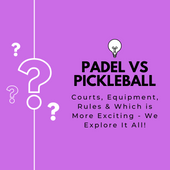
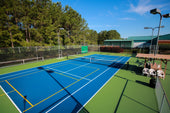
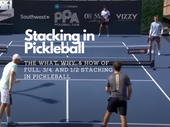
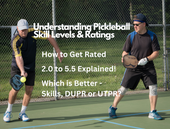



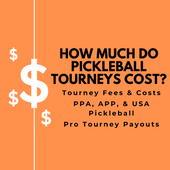
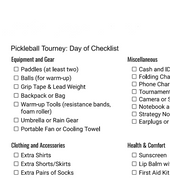
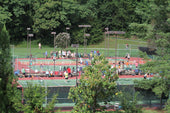
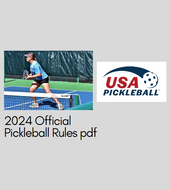


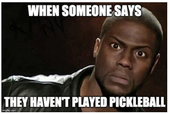
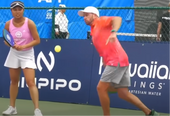













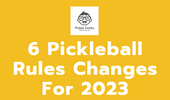
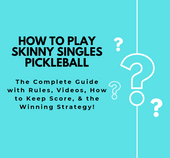
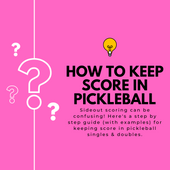
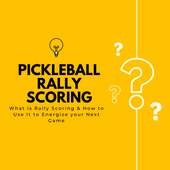
3 comments
The 2025 version of the Global Pickleball Federation Official Rule book states in rule 4.A.8.c “The restrictions on the Volley Serve in Rule 4.A.7 do not apply to the drop serve.” This means that the server’s arm does not need to be moving in an upward arc at the time the ball is struck, the highest point of the paddle head does not need to be above highest part of the wrist when the paddle strikes the ball and contact with the ball does not need to be made above the waist. Sure wish everyone would read the rules so I didn’t have to pull out my phone regularly to show the rules in order to prove I am indeed serving legally with my drop serve.
On a tennis serve, if the toss is errant, the server can stop the motion, and restart the serve. You don’t lose the 1st serve. On a PB drop serve, if the bounce is errant, can I stop the ball, and restart the sequence? I’ve seen nothing in the rulebook or any blog. Any suggestions?
Hi, I reviewed your Pickleball Drop Serve Rules above and noticed you added (e.g., shoulder or chest-height) to your interpretation of the rules. However, 4.A.8.a. of the 2024 rules only say, “The server must release the ball from one hand only or drop it off the paddle face from any natural (un-aided) height.” When watching many professional videos on-line about drop serves, they typically drop them from eye level or recommend having your arm at a 45-degree angle. I started playing pickleball 10 months ago and use the drop serve. I took a lesson on serving from a professional player who also showed me to drop the ball from a height of eye level. However, when I played at a different court today using that method, someone told me I was doing an illegal drop serve and that it had to be at shoulder or chest-height. The only reference to that phrase was on your website, which could be very misleading to someone who thinks that is the exact wording of the rules when it isn’t. As long as the drop is un-aided, and even if my arm is at a 45-degree angle, that is still considered a natural height. Thank you for your consideration of my comments.